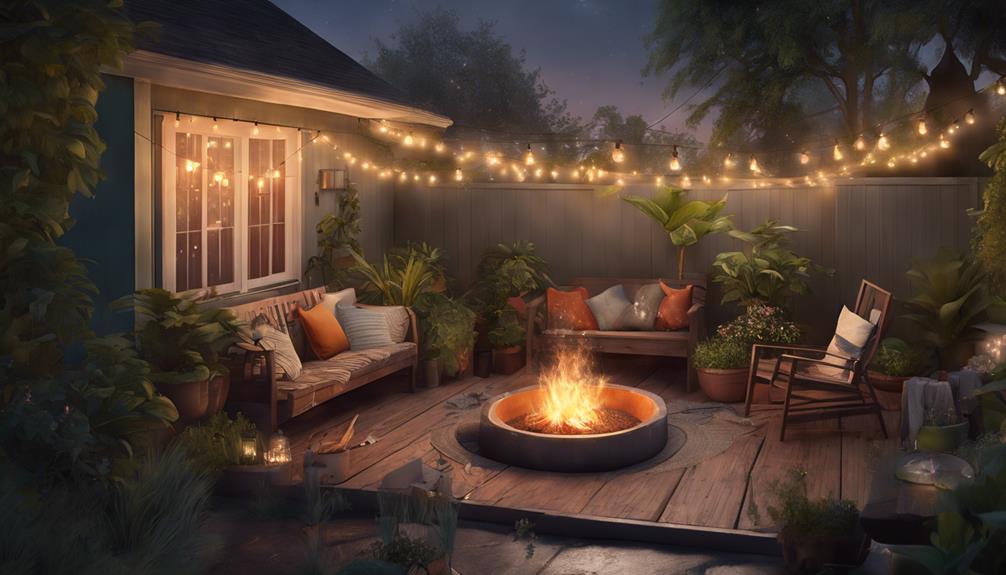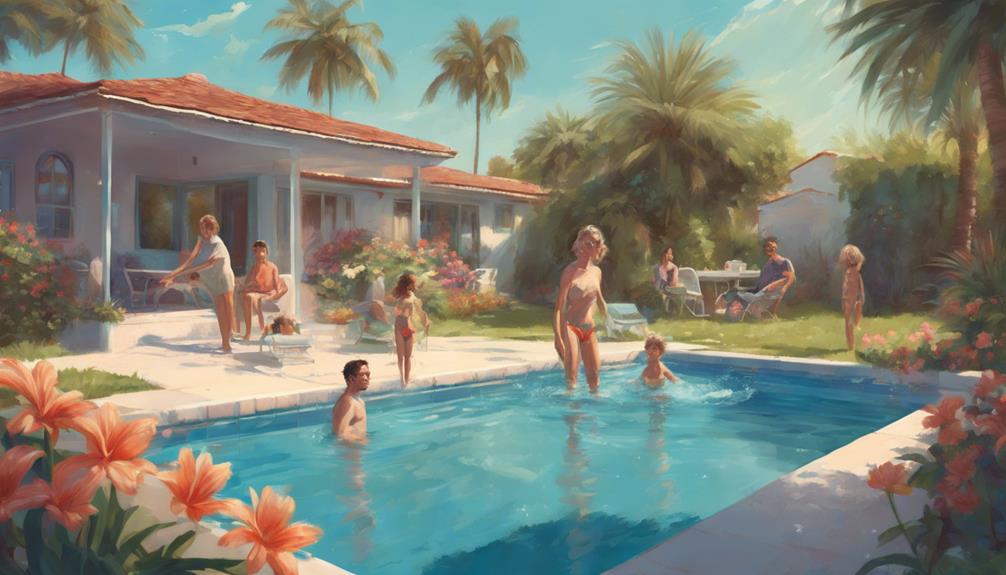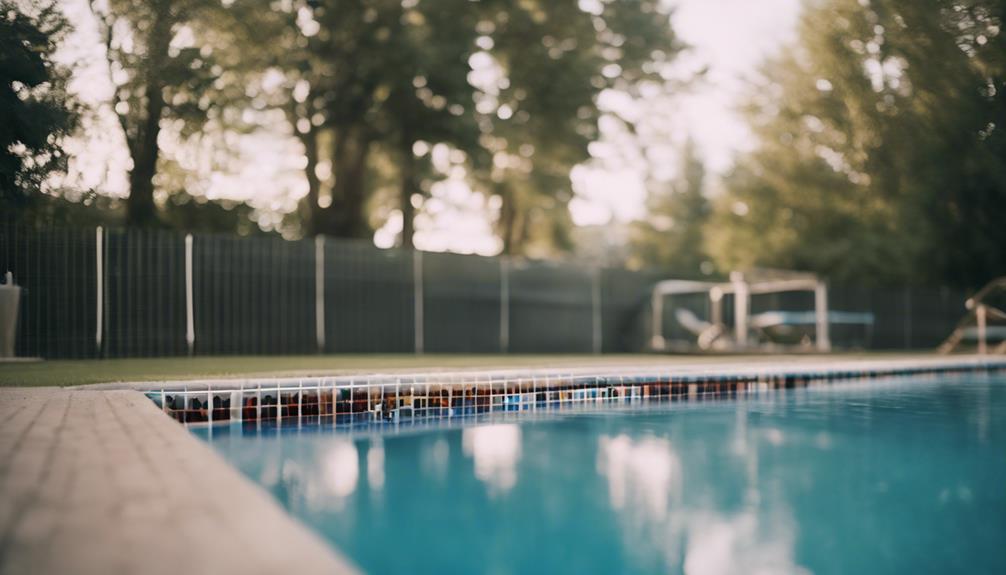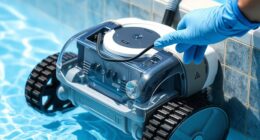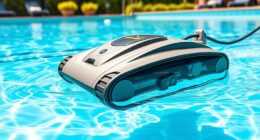Enhance your backyard area by incorporating landscaping, strategic zoning, focal points, varying levels, and careful greenery selection. Opt for greenery with vertical growth patterns, tall trees, and columnar evergreens. Segment your space into functional zones and employ lighting strategically. Integrate water features, artistic elements, and fire pits as focal points. Utilize raised or sunken elements to add depth, and create different levels for diverse activities. By implementing these tips, you can maximize your outdoor space and establish a welcoming oasis.
Key Takeaways
- Utilize vertical gardening and tall, thin trees for visual expansion.
- Segment backyard into purpose zones with distinct features.
- Incorporate focal points like water features and sculptures for attention.
- Create depth with raised or sunken elements and varied levels.
- Select greenery strategically for visual impact and a spacious feel.
Landscaping Enhancements for Visual Expansion
Strategically implementing landscaping enhancements is essential to visually expanding the perceived size of a small backyard. By carefully selecting greenery, hardscaping elements, and lighting fixtures, one can create an illusion of spaciousness.
The key lies in utilizing plants with vertical growth patterns, such as tall and thin-shaped trees, columnar evergreens, and dwarf shrubs. These choices not only add elegance but also prevent overcrowding. Additionally, incorporating vertical gardening techniques, like hanging plants and tall privacy trees such as Leyland cypress, can save ground space and contribute to a sense of depth.
Through thoughtful landscaping choices, a small backyard can be transformed into a visually expansive and inviting outdoor oasis.
Strategic Zoning for Illusion of Space
Creating distinct zones within your backyard can effectively create an illusion of a larger space. By strategically zoning different areas for specific purposes, you can maximize the perceived size of your outdoor space. Consider dividing your backyard into zones for gardening, dining/lounging, and perhaps a relaxation corner. This segmentation not only organizes your backyard but also gives the impression of multiple interconnected spaces, making the area feel more extensive and diverse. Winding paths or changes in flooring materials between these zones can further enhance the illusion of space by creating a sense of separation and exploration.
| Zoning Area | Purpose |
|---|---|
| Gardening | Planting and growing |
| Dining/Lounging | Relaxation and meals |
| Relaxation Corner | Reading or meditation |
Focal Points to Capture Attention
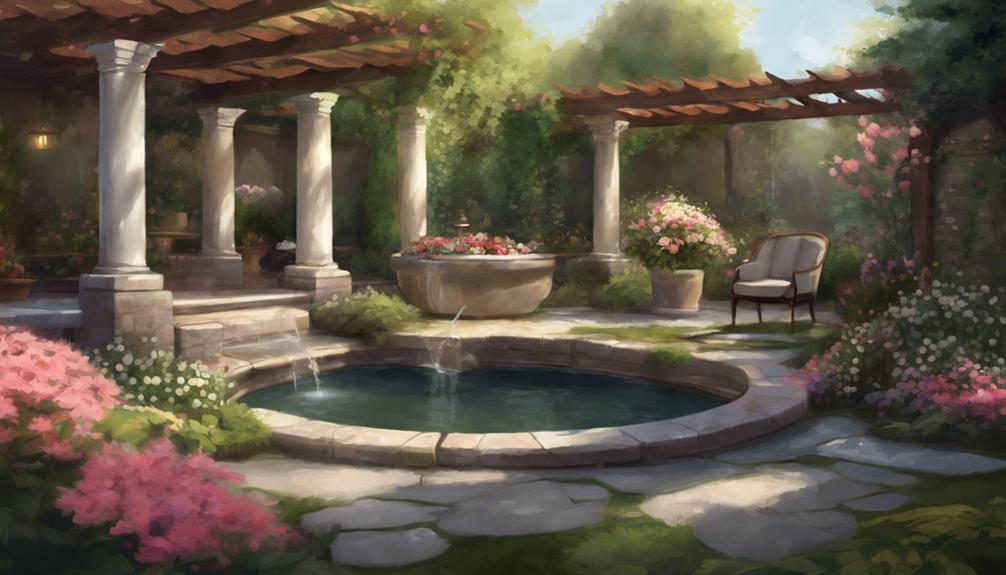
When designing your backyard oasis, incorporating focal points can effectively capture attention and elevate the overall aesthetic appeal of the space.
Here are four key focal point ideas to enhance your backyard:
- Water Features: Installing a fountain or a small pond can create a soothing atmosphere and serve as a focal point that attracts the eye.
- Sculptures or Art Pieces: Adding sculptures or unique art pieces can inject personality into your backyard and become a conversation starter.
- Fire Pits or Outdoor Fireplace: A fire pit or outdoor fireplace can serve as a gathering spot and a focal point that adds warmth and ambiance to the space.
- Architectural Elements: Incorporating architectural elements like pergolas, arbors, or trellises can provide structure and visual interest, drawing attention to specific areas of the backyard.
Utilizing Levels for Depth
Enhancing a backyard's visual appeal and functionality can be achieved by incorporating multiple levels to create depth within the space. By adding raised or sunken elements such as patios, decks, or planter boxes, different areas for various activities can be established. This technique not only breaks up the space effectively but also offers a unique and dynamic layout.
Multiple levels help in dividing elements of the backyard, providing a sense of purpose to each area. Additionally, the inclusion of various heights and depths enhances visual interest, making the backyard more visually appealing. Utilizing levels is a practical way to maximize space and create a multi-dimensional environment that adds both aesthetic value and functionality to the backyard.
Greenery Selection for Visual Impact
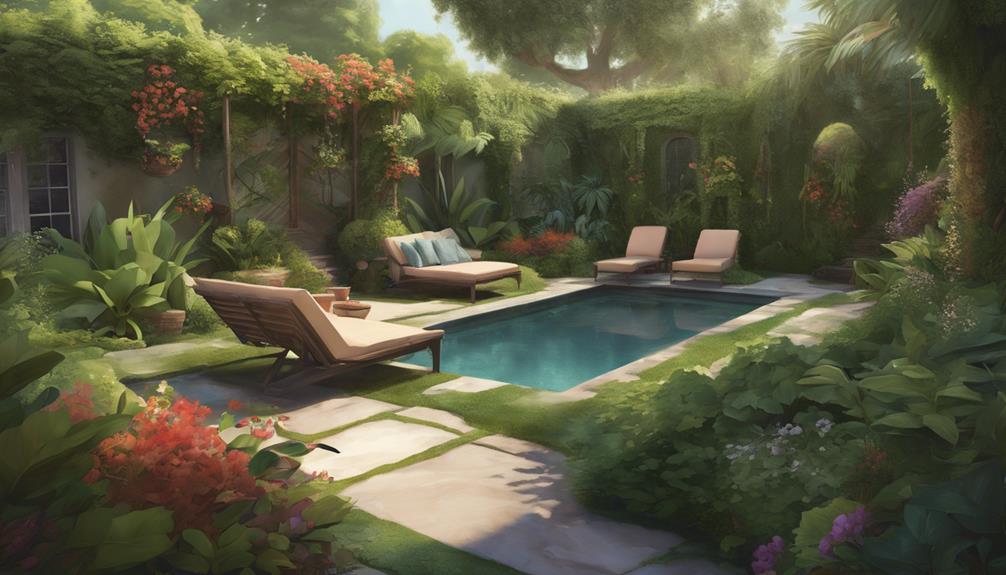
Selecting the right greenery plays a significant role in enhancing the visual impact of your backyard space. When choosing greenery for visual impact, consider the following:
- Tall and Thin Trees: Opt for trees that grow vertically to provide an elegant touch without taking up much horizontal space.
- Columnar Evergreens and Dwarf Shrubs: These varieties are recommended for adding depth and texture without overwhelming the area.
- Statement Tropical Plants: Large-leaved tropical plants can serve as eye-catching focal points, adding a touch of lushness to your backyard.
- Mix of Greenery: Combining different types of greenery or opting for a single striking plant can enhance visual appeal while maintaining a clean and uncluttered look.
Frequently Asked Questions
How Can I Incorporate Water Features Into My Small Backyard?
Incorporating water features into a small backyard can enhance its appeal and create a tranquil atmosphere. Consider options like fountains, small ponds, or cascading waterfalls to add a touch of elegance and serenity to your outdoor space.
What Are Some Creative Ways to Add Seating in Limited Space?
In a limited space, seating can be as elusive as a hidden oasis. Consider multitasking furniture like benches with storage, hanging chairs, or built-in seating around planters. These creative solutions maximize comfort while minimizing footprint.
Are There Options for Incorporating Fire Elements Into a Small Backyard?
Incorporating fire elements into a small backyard can be achieved by opting for compact fire pits, tabletop fire bowls, or fire tables. These options provide warmth and ambiance without overwhelming the space, enhancing its coziness and aesthetics.
Can Lighting Be Used to Enhance the Perceived Size of a Backyard?
Yes, lighting can be strategically used to enhance the perceived size of a backyard. Properly placed outdoor lighting fixtures can create depth, highlight focal points, and extend visual boundaries, making the space feel larger and more inviting.
What Are Some Innovative Ways to Create Privacy in a Small Backyard?
Innovative ways to create privacy in a small backyard include incorporating vertical gardening with tall trees and hanging plants, utilizing Leyland cypress trees for added privacy, considering privacy screens or fences, and strategically placing seating areas for seclusion and comfort.
Conclusion
In the intricate tapestry of outdoor living spaces, the art of expanding a backyard's perceived space is akin to painting with light and shadow. By incorporating strategic landscaping, zoning, and design elements, homeowners can transform a compact outdoor area into a vast, inviting oasis. One key element of creating an inviting outdoor oasis is the addition of cozy features like a fire pit. However, it’s important for homeowners to also prioritize safety when enjoying their outdoor space. By following backyard fire pit safety tips, such as keeping a safe distance from flammable materials and always supervising the fire, homeowners can create a warm and welcoming atmosphere without compromising on safety. These precautions can ensure that the expanded perceived space of the backyard remains a tranquil and enjoyable environment for all.
Just as a skilled artist uses brushstrokes to create depth and dimension, so too can one utilize these tricks to craft a backyard retreat that feels boundless and serene.

